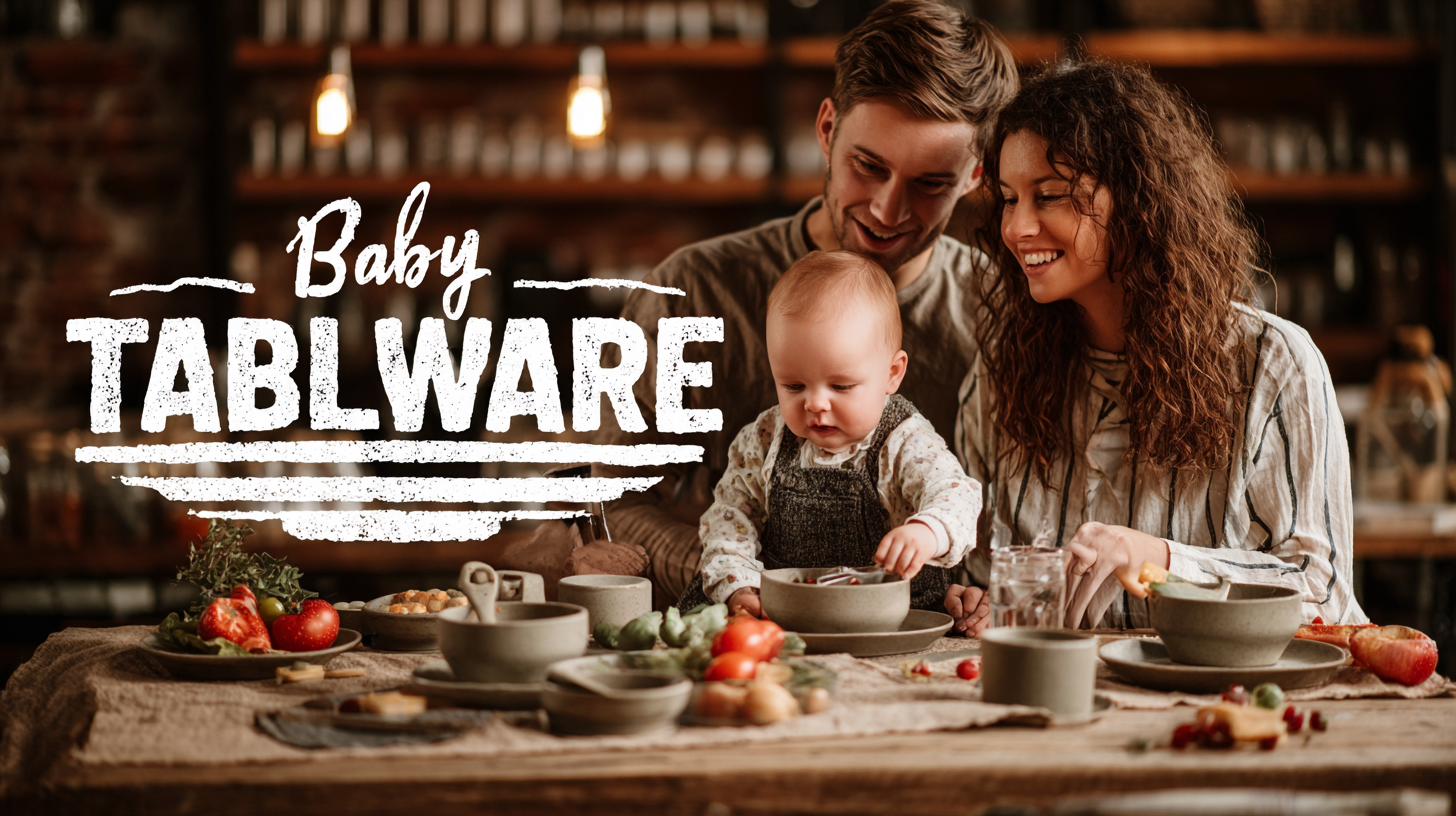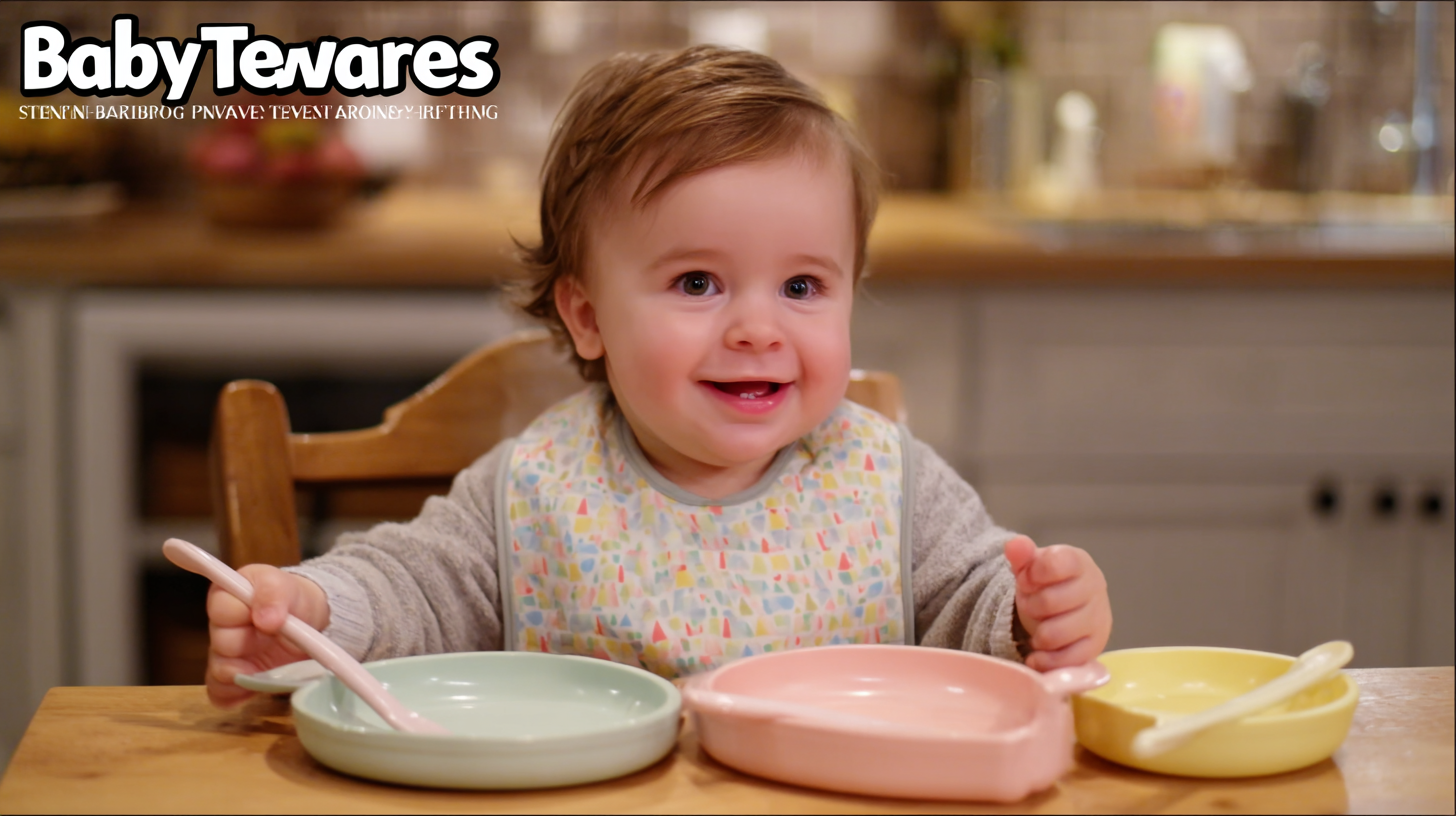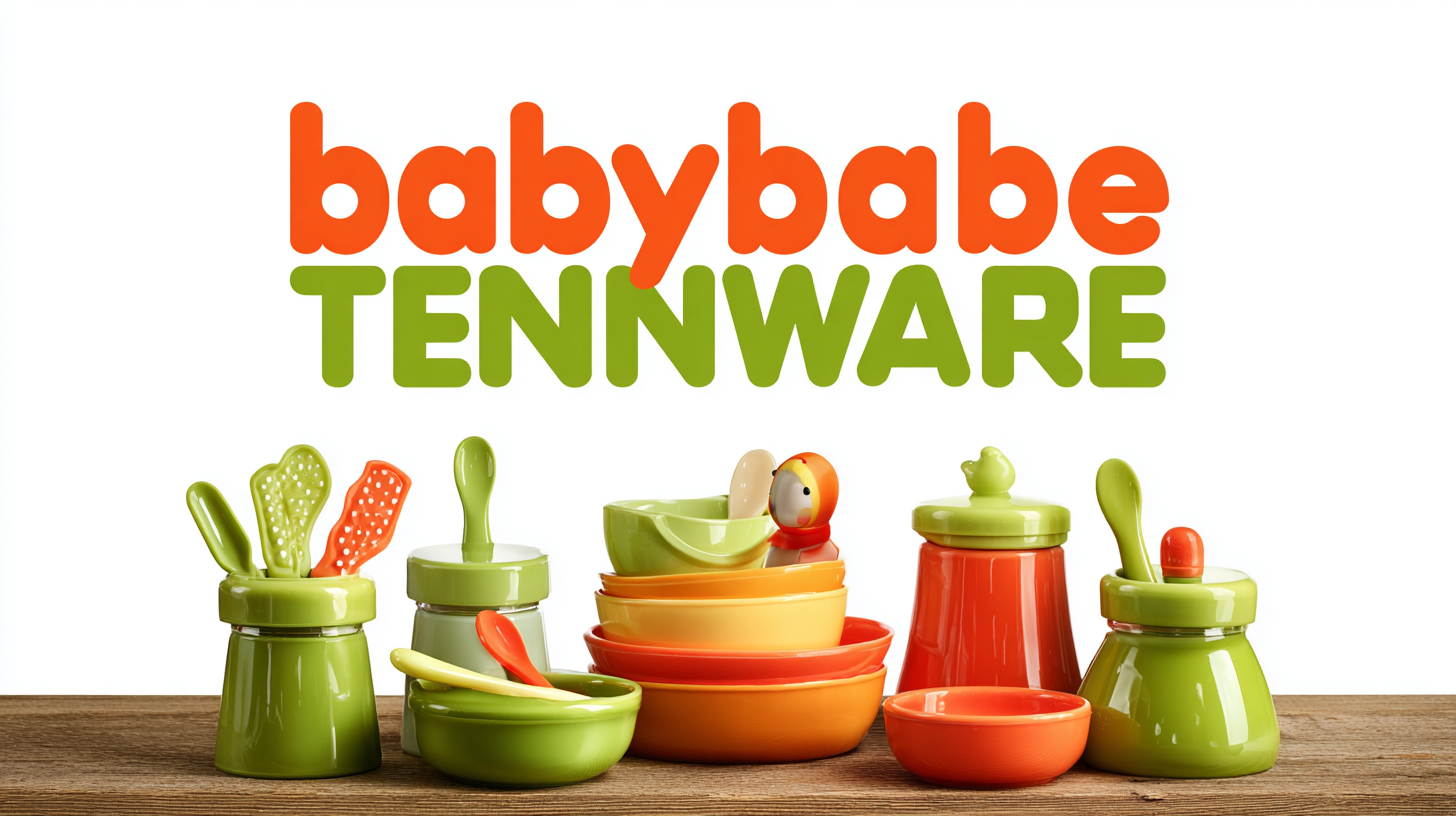
2025 Baby Tableware Trends and Unique Comparisons for Smart Parenting Choices
As the parenting landscape evolves, so too does the market for Baby Tableware, with innovative designs and smart technologies emerging to meet the needs of 21st-century families. According to a recent report by Grand View Research, the global baby food and tableware market is projected to reach USD 3.8 billion by 2025, reflecting a growing demand for products that prioritize safety, convenience, and sustainability.
In this blog, we will explore the top trends in baby tableware for 2025, including eco-friendly materials, multifunctional designs, and smart technology integration that enhances the feeding experience. These advancements not only cater to health-conscious parents but also support their journey towards making informed and mindful choices for their little ones.

Join us as we delve into these unique comparisons and insights that aim to empower smart parenting decisions in the ever-evolving realm of baby care.
Emerging Trends in Baby Tableware: A 2025 Perspective for Parents
As we approach 2025, the landscape of baby tableware is evolving, focusing increasingly on safety, sustainability, and technology. Recent industry reports indicate that the global baby tableware market is projected to grow significantly, reaching approximately $4 billion by 2025, driven mainly by a rise in health-conscious parenting and eco-friendly products. Parents are now more informed about the potential risks associated with traditional plastic materials and are gravitating towards biodegradable and silicone options, which are not only safer but also help reduce environmental impact.
**Tip: Look for tableware that boasts BPA-free and phthalate-free certifications to ensure the safety of your child.** Modular designs that cater to fast-growing toddlers are also gaining traction, allowing dishes to adapt as children develop their eating skills. Moreover, smart tableware is entering the market, featuring integrated technology to help monitor nutrient intake and portion sizes, which can be particularly beneficial for parents focused on balanced nutrition.
**Tip: Consider choosing products that incorporate dual function, such as a plate that doubles as a suction bowl, to make mealtime both practical and effective.** Innovations in design also emphasize colorful, engaging aesthetics to entice young eaters and make mealtime enjoyable, showcasing a perfect blend of functionality and fun. As we look forward to these trends, smart parenting choices become easier with such versatile and thoughtful baby tableware options.
2025 Baby Tableware Trends
Comparative Analysis of Global Baby Tableware: What Sets Chinese Products Apart
 In recent years, the baby tableware market has witnessed a significant transformation, with diverse products emerging globally. Among these, Chinese baby tableware has carved a niche due to its unique designs and innovative materials. What sets Chinese products apart is their emphasis on safety standards, often surpassing international regulations. Brands utilize food-grade silicone and BPA-free plastics, ensuring that feeding essentials are free from harmful chemicals.
In recent years, the baby tableware market has witnessed a significant transformation, with diverse products emerging globally. Among these, Chinese baby tableware has carved a niche due to its unique designs and innovative materials. What sets Chinese products apart is their emphasis on safety standards, often surpassing international regulations. Brands utilize food-grade silicone and BPA-free plastics, ensuring that feeding essentials are free from harmful chemicals.
When selecting baby tableware, consider incorporating utensils that promote independence. For example, products with soft grips and ergonomic designs encourage babies to self-feed, fostering motor skills development. Additionally, look for items that are microwave and dishwasher safe for convenience in the busy lives of parents.
Another interesting trend is the rise of emotional design in baby tableware. Many Chinese brands focus on creating visually appealing and educational designs featuring animals or characters that engage children during mealtime. This not only makes feeding enjoyable but also helps in cognitive development as they learn to recognize shapes and colors. Remember, the right tableware can make a significant difference in your child's mealtime experience!
Sustainability in Baby Tableware: Eco-Friendly Choices for Modern Families
As modern families increasingly prioritize sustainability, the trend towards eco-friendly baby tableware continues to gain momentum. A recent report from the Global Baby Products Market projects a significant rise in demand for sustainable materials, with a 15% increase forecasted over the next five years. Parents are now more informed and concerned about the impact of plastic waste, leading to a shift towards biodegradable and recyclable options. Materials such as bamboo, silicone, and stainless steel are becoming mainstream, transforming the way families approach mealtime.
To make smart choices, parents should consider the entire lifecycle of the products they choose. One key tip is to look for certifications like BPI compostability standards for biodegradable items or FDA approval for safety in baby products. Another option is to invest in high-quality, durable tableware that can withstand the test of time, reducing the need for frequent replacements and minimizing waste. Additionally, exploring brands that adopt a circular economy model can further support sustainable usage, as these companies often take back products for recycling or repurposing.
Lastly, it’s essential to educate yourself about the materials and their sourcing. Opt for brands that transparently share their environmental practices and commitment to sustainability. This way, modern families can not only make informed choices for their little ones but also contribute positively to the planet's future.
Innovation in Safety Features: Ensuring Child-Friendly Tableware
As we move towards 2025, the baby tableware industry is experiencing a significant shift towards enhanced safety features, reflecting a growing concern among parents for their child's wellbeing. According to a recent report by Market Research Future, the global baby tableware market is projected to reach $2.5 billion by 2025, with a notable demand for products that prioritize health and safety. Innovations such as BPA-free materials, ergonomic designs, and anti-slip features are becoming standard to prevent accidents during mealtime. Parents are increasingly seeking tableware that not only looks appealing but also meets rigorous safety criteria.
One of the standout trends is the integration of technology in child-friendly tableware. For example, companies are developing smart products that monitor temperature and alert parents if food or liquids are too hot for consumption. A study published in the Journal of Pediatric Safety found that 68% of parents would consider purchasing high-tech tableware equipped with safety alerts, showcasing a clear shift towards their adoption. Additionally, manufacturers are focusing on sustainability, with a reported 35% of parents expressing a preference for eco-friendly materials. This reflects a dual commitment to child safety and environmental responsibility, paving the way for thoughtful and safe parenting choices in the coming years.

The Role of Design and Functionality in Baby Feeding Solutions for 2025
As we approach 2025, the baby tableware market is poised for significant growth, with the global baby bottle market projected to expand to $490 million and further increase to $820 million by 2033. This surge emphasizes the importance of innovative design and functionality in baby feeding solutions, which are tailored not only to meet the needs of infants but also to make parenting easier for adults.
In today's fast-paced world, smart parenting choices hinge on selecting products that blend aesthetics with practicality. The emphasis on design means that feeding products are increasingly coming equipped with features that enhance usability—such as ergonomic shapes, easy-to-clean materials, and intuitive designs that promote self-feeding.
These advancements ensure that mealtime is a stress-free and enjoyable experience for both parents and their little ones. As we move forward, the demand for stylish and functional options in baby tableware will continue to influence market trends, shaping how families approach the feeding routine in harmonious and innovative ways.
